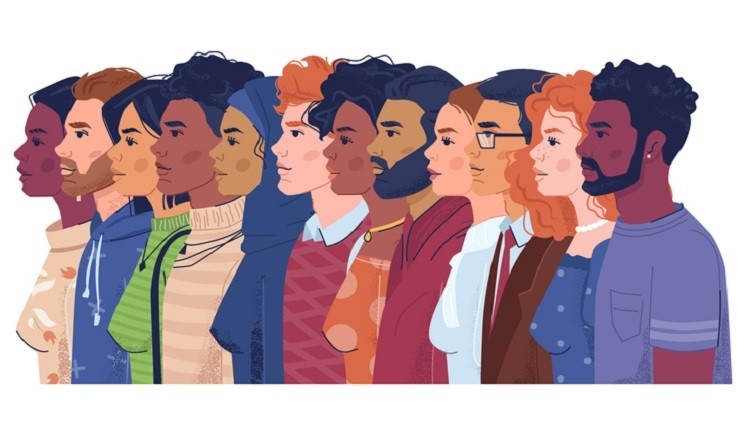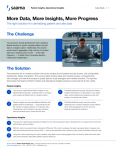Oracle: How can clinical trials better fill the patient inclusivity gap?

The clinical research industry has set recruitment of diverse patient populations in its sights, yet trial teams still often struggle to hit such targets. Katherine Vandebelt, global head of clinical innovation with Oracle Health Sciences, spoke with Outsourcing-Pharma about the obstacles on the path, and how they might be overcome.
OSP: Could you please talk about how conversations around the clinical trial sphere about diversity and inclusivity in clinical trials evolved in the years leading up to the pandemic?
KV: Diversity in clinical trials has been an area of discussion for many years. For starters, a major gap exists in minority representation in clinical trials. As a result, it’s difficult to determine the effectiveness of a particular medication or medical device, because its efficacy can vary widely depending on ethnicity and gender.
Too often, minority populations are underrepresented, even in clinical trials for new treatments of diseases that disproportionally affect them. This ethnic diversity gap exacerbates minority health issues and drives up the nation’s health care costs. Health care organizations must make increasing minority participation in clinical trials a top priority.
The industry, and society at large, have been looking for ways to break through several barriers that have inhibited inclusivity. For example, lack of trust in the pharmaceutical industry. There may be cultural or age-related differences in how patients interact with healthcare systems because of past cases of unethical treatment of patients – such was the case with the Tuskegee Syphilis Study.
There may also be investigator bias when asking participants to take part in clinical trials. Patients from diverse populations may not be willing to participate if the individuals who are managing the consenting process do not represent similar groups. On one hand, sites may be more likely to contact their existing patient pool, which may not represent a diverse population. This also includes not adapting their recruitment process to suit diverse populations (e.g. involving families or community groups in the recruitment process).
It’s critical the industry evolve to include more patients from various ethnic groups. Otherwise, we may miss out on key discoveries that can provide us with crucial information about diseases and how best to develop medicines for them.
Without accurate data, doctors cannot prescribe drugs and other treatment options for diseases that affect their minority patients. Without access to effective (and less expensive) preventative drugs, minority patients will be unable to prevent their health from deteriorating.
OSP: Many companies and organizations saw an opportunity to ‘pivot’ and address the challenge of increasing DE&I in clinical research—could you please tell us a bit about that shift?
KV: In 1993, the National Institutes of Health (NIH) released its new policy mandating all federal grants for clinical research to include women and minorities. Since that time, and especially throughout the last decade, there have been several pushes by government and industry agencies across North America and Europe to increase diversity in clinical research.
For example, organizations like TransCelerate Biopharma have come together to introduce patient-centric programs. In 2019, TransCelerate introduced the Patient Experience Initiative, which aims to improve engagement and partnership between patients and the industry.
In 2015, the FDA launched an ambitious Drug Trials Snapshots program. The purpose behind this program was to make demographic data more available and transparent, providing the public with highlights of where the trials were conducted and whether there were any differences in the benefits and side effects among different demographic groups. Also, in 2020 the FDA issued a range of suggestions in a document titled ‘Enhancing the Diversity of Clinical Trial Populations’. The document details the different steps sponsors and research sites can take to facilitate the participation of ethnic groups in clinical trials.
OSP: The challenge of addressing underrepresentation in trials is something that’s going to take a long time—could you please talk about some of the actions you think clinical research professionals should support now, versus in the long run?
KV: Many minorities never learn about the vital role these clinical trials play, or that they’re eligible to participate. Some lack transportation to and from clinical sites and some trials are only held in large city hospitals instead of community hospitals, which can be more easily accessible.
To drive inclusion, there needs to be a more proactive and sustained nationwide outreach effort to raise awareness within minority communities. One way to accomplish this is by communicating in multiple languages. Right now, the vast majority of clinical trial information is published in English. In order to attract minority populations, translation is a critical element.
By partnering with patient-advocacy groups for recruitment, follow-up, and even data collection (particularly for patient-reported outcomes), sponsors may help keep patients engaged for longer and derive higher quality data sets.
It’s also important to partner with trusted people in the community (religious leaders or government leaders) that will share clinical trial information with the people in their communities. Otherwise, there may be a lack of trust or people may feel as though they are being taken advantage of.
Ultimately, we must invest systematically in the patient journey, while also considering all the personal stigmas (e.g., age, side effects, etc.) and logistical hurdles (e.g., location, time) that minority populations often face.
OSP: How have sponsors taken on the issue—many pharmaceutical firms have staff with “diversity officer” or similar titles, but what sorts of actions have you seen at that level?
KV: The industry is trying to establish guidelines for inclusivity. In April 2021, the Pharmaceutical Research and Manufacturers of America (PhRMA) announced the release of the first-ever, industry-wide principles to ensure clinical trial diversity in the US. They focus on four main areas:
- Building trust and acknowledging the historic mistrust of clinical trials within black and brown communities
- Reducing barriers to clinical trial access
- Using real-world data to enhance information on diverse populations beyond product approval
- Enhancing information about diversity and inclusion in clinical trial participation
Bringing the industry together is important because it presents a united front and allows everyone to move forward together. In the long term, it’s important to move away from funding short-term small-scale clinical trials towards platform trials. Instead of multiple clinical trials that compete against each other, platform trials can create a framework in which multiple questions can be addressed over time in one large trial that can provide promising and conclusive evidence
OSP: Could you please talk about how public awareness of trials and their importance has evolved, what’s contributed to it, and how you see that continuing to evolve? What impact has public perception on clinical trials had on the issue—and, perhaps, vice versa?
KV: In a 2018 NIH survey, clinical trial participation was perceived as inconvenient and burdensome. Nearly half (49.0%) of those surveyed expressed that their clinical trial participation disrupted their daily routine. Findings indicated a belief in the importance of clinical research, but limited understanding of the research process persists.
That said, 84.5% of people perceived clinical research to be very important to the discovery and development of new medicines, but 59.0% were unable to name a place where studies were conducted.
While the pandemic put a spotlight on clinical trials because of the vaccine trials, it did not do much to move the needle in terms of diversity and inclusion. In many cases, the underserved/minority population did not have access to the trials.
OSP: How can companies like yours contribute to clients’ efforts to make a difference in their organizations?
KV: Digital conveniences such as decentralized trials, remote enrollment tools, consent forms, wearables and remote devices, and data capture will help expand access to clinical trials. One significant roadblock to clinical trial inclusion has been location. By decentralizing trials and collecting data remotely, people from – in theory – everywhere can participate. This could hold great promise in reaching more diverse communities.
As a leader in clinical trial technology, Oracle is helping our customers provide the transformative solutions needed to move this vision forward. We innovate to bring new experiences to market and improve the clinical research ecosystem for patients, healthcare professionals, sponsors, and regulators using the power of technology. Imagine, clinical research as an accessible care option to anyone.
The right people with the right information, tools, and time will drive the shift and growth of diversity and inclusion in clinical trials. We are here to help drive that effort forward.
OSP: Is there anything you’d like to add?
KV: On the issue of diversity and inclusion in clinical trials, we are at the beginning of a very long journey. Decentralized clinical trials on their own will not solve the diversity issues in clinical trials. The industry, and society as a whole, will need to band together to systematically eliminate the personal and logistical barriers that exist. Outreach must be done to reshape the beliefs and attitudes about clinical trials and to attract the diversity everyone is seeking.



















